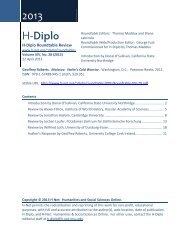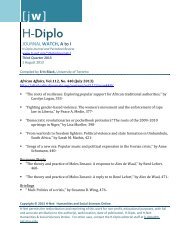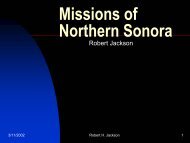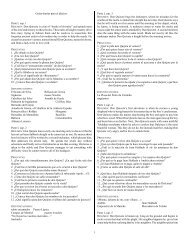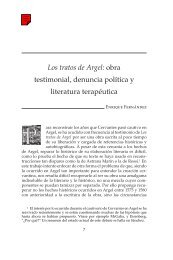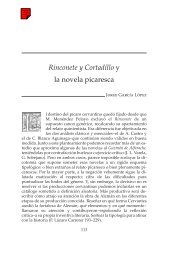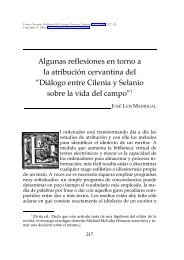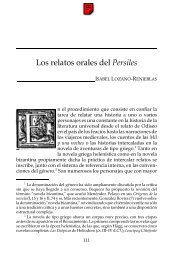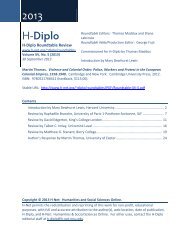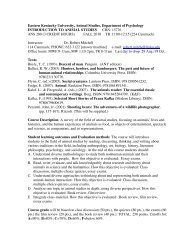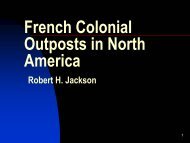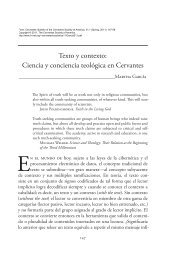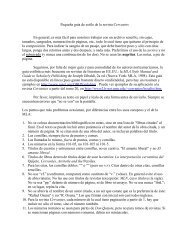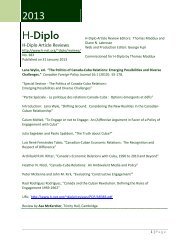District Of Columbia Inventory Of Historic Sites 2002 - H-Net
District Of Columbia Inventory Of Historic Sites 2002 - H-Net
District Of Columbia Inventory Of Historic Sites 2002 - H-Net
You also want an ePaper? Increase the reach of your titles
YUMPU automatically turns print PDFs into web optimized ePapers that Google loves.
Dupont Circle: see L’Enfant Plan<br />
Dupont Circle <strong>Historic</strong> <strong>District</strong><br />
Roughly bounded by Rhode Island Avenue, M, and N Streets on the south, Florida Avenue on the west, Swann<br />
Street on the north, and the Sixteenth Street HD on the east<br />
Among the city's most elegant historic residential neighborhoods, notable for superior examples of Victorian<br />
rowhouse architecture in Queen Anne and Richardsonian Romanesque styles, as well as some of the city's<br />
finest turn-of-the-century mansions in Beaux Arts, Chateauesque, Renaissance, and Georgian Revival styles;<br />
has served as the home of many prominent and affluent Washingtonians, as well as foreign legations;<br />
prominent local and national architects are represented; unusually rich and varied streetscapes, many along the<br />
diagonal L'Enfant avenues, with centerpiece at Dupont Circle; fine examples of early apartments, 1920s<br />
commercial buildings along Connecticut Avenue; includes approximately 3100 buildings c. 1875-1940; DC<br />
listing 11/8/64 (preliminary identification), designated 6/17/77, NR listing 7/21/78; DC designation expanded<br />
6/30/83 (effective 1/4/85), NR listing expanded 2/6/85<br />
Dupont Memorial Fountain: see Civil War Monuments<br />
Duvall Foundry<br />
1050 30th Street, NW<br />
Canal era warehouse built and operated as a foundry by William T. Duvall until c. 1870; used as veterinary<br />
hospital in early 20th century; 2 stories, gable roof, brick facade with piers; large arched opening on second<br />
floor, canal side; built c. 1856, moved c. 1974; DC designation 1/23/73; within Georgetown HD<br />
E Street Complex: see Properties Determined Eligible for the National Register<br />
East and West Potomac Park: see Potomac Park<br />
East Capitol Street Car Barn (Metropolitan Railroad Company Car Barn)<br />
1400 East Capitol Street, NE<br />
Built 1896 (Waddy B. Wood, architect); DC designation 3/27/73, NR listing 2/5/74<br />
Eastern Market (and Interiors)<br />
7th Street & North Carolina Avenue, SE<br />
One of three remaining public markets, constructed on a model market plan developed by the city's premier<br />
post-Civil War architect; important document of civic improvement during the prolific public works era of<br />
Boss Shepherd; notable achievement in the development of modern, clean, and efficient public services;<br />
spurred development of commercial and residential growth in the area; addition a notable work of the <strong>Of</strong>fice of<br />
the Building Inspector; DC listing 11/8/64; DC designation of interiors 8/21/91 (includes North Hall, Center<br />
Hall, and South Hall with stairhall, "apartments," Market Master's <strong>Of</strong>fice on mezzanine, and basement); NR<br />
listing 5/27/71, supplemented 3/24/95; within Capitol Hill HD; DC ownership<br />
South Hall: Built 1871-73, Adolph Cluss, architect; Italianate style, red brick, one story with hipped roof,<br />
round and arched windows, deep corbels, robust expression; open-span interiors with exposed trusses,<br />
utilitarian finishes; vaulted brick basement; cast iron structural elements, monitor skylights<br />
North and Center Halls: Built 1908, Snowden Ashford, architect; similar design with more classical detail<br />
Eastern Market Square: see L’Enfant Plan<br />
Ebenezer United Methodist Church<br />
4th & D Streets, SE<br />
Third home of the oldest African-American congregation on Capitol Hill; founded as an integrated<br />
congregation in 1805, built city's first Methodist church in 1811; separate African-American congregation<br />
("Little Ebenezer") founded in 1827, and housed in a frame church; brick church built in 1870 on the same<br />
28



